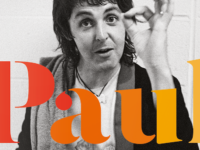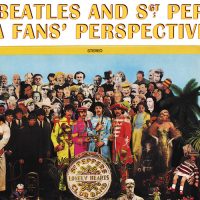In just a few years, the Beatles had extensively toured the globe. While numerous books provide set lists and basic details such as concert attendance, few have fully captured the excitement surrounding the events. When the Beatles came to U.S. cities, the press extensively covered the event from the often amusing press conferences to the swooning fans. Scott (Belmo) Belmer captures the hysteria surrounding Beatlemania in The Beatles Invade Cincinnati, a scrapbook chronicling the Beatles’ 1964 and 1966 visits to the city.
Through newspaper clippings, rare photos, and memorabilia, Belmer presents a thorough picture of the chaos and bewilderment besetting fans and media reporters when the Beatles hurricane headed into Cincinnati. City officials, fans, and their parents had never experienced anything close to this turbulence, and various newspaper articles represent an older society clearly conflicted with this new youthful force: “Teen-Age Orgy: Beatles Should be Banned, Says Guidance Expert” screams an August 26, 1964 headline. An article describing the band’s first Cincinnati press conference treats them like a sideshow curiosity: “At Cincinnati Gardens, it was more proper; not quite formal … but of interest because you could study the boys from a front-row chair,” wrote Dale Ste. Yet he admits that the four possessed intelligence, stating that “if the questions were sharper, the answers would be deeper.”
A particularly interesting aspect of The Beatles Invade Cincinnati is its complex picture of Beatles fans. Clearly, the print media enjoyed interviewing screaming girls, often publishing photos of them sitting in bedrooms plastered with Beatles posters. In retrospect, however, these images reflect looming societal changes.
The female fans’ unrestrained emotions and emerging sexuality clearly agitated parents and psychologists, although one writer placed it in perspective through a piece entitled “It’s Sinatra All Over Again.” Still, these women symbolize the dawning of a new era of sexual freedom, loosening of morays, and a sign of the dismantling of “traditional” ideals of race, politics, and gender.
Belmer, a longtime Beatles author who previously published Black Market Beatles, The Beatles: Not for Sale, and the Making of Sgt. Pepper, augments these clippings and photos with new interviews. Fans recall seeing the group for the first time, while WSAI Cincinnati DJ Dusty Rhodes (part of the radio station’s “Good Guys” lineup) describes introducing the Beatles at their 1964 concert.
By 1966, the initial Beatlemania excitement was now more subdued. Local papers covered their long awaited return to the city, but with an increasingly jaded attitude. Reporters and fans were angry that the group did not acknowledge them upon arrival between the plane and the waiting limousine. Next, heavy rainstorms forced the concert to be postponed a day, and articles pointedly mentioned that the crowd seemed thinner. Still, reviews were positive, with the usual pictures of screaming girls accompanying the critical raves.
Numerous groups opened for the Beatles, and Belmer interviews a member of one of those bands: Vern Miller, bassist for the Remains. Miller’s recollections, as well as those from local cameramen, photographers, and fans, paint a vivid picture of Beatlemania’s waning days.
While not a straightforward history, The Beatles Invade Cincinnati offers a different experience: one that immerses the reader in the circus-like atmosphere of the 1964 and 1966 concerts. While the book strictly covers one stop on the Beatles’ tours, it presents a case study that could be about any city overwhelmed with the energy the Beatles had introduced to music and culture. Belmer’s meticulous research and highly focused approach result in a fun yet educational read.
‘The Beatles Invade Cincinnati’ is available through PayPal for $25 (U.S. orders only) payable to Belmer at [email protected].
- How John Lennon Came Roaring Back on the Beatles’ White Album - November 22, 2023
- Five ‘With the Beatles’ Deep Cuts That Illustrate Their Lasting Debt to R&B - November 20, 2023
- Five Must-Hear Deep Cuts from the Beatles’ ‘Past Masters’ - March 7, 2023




